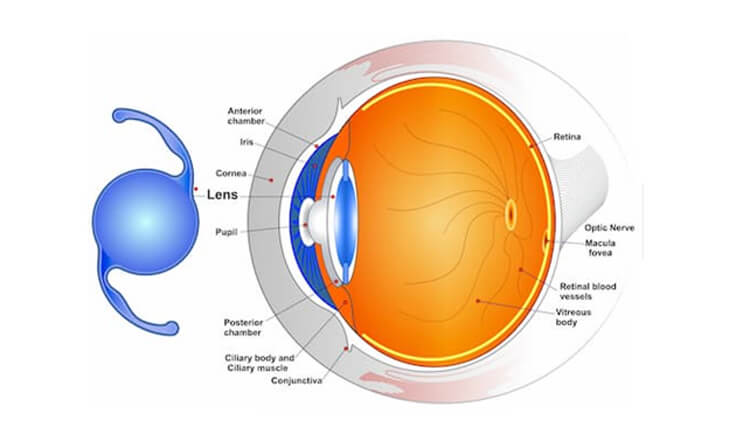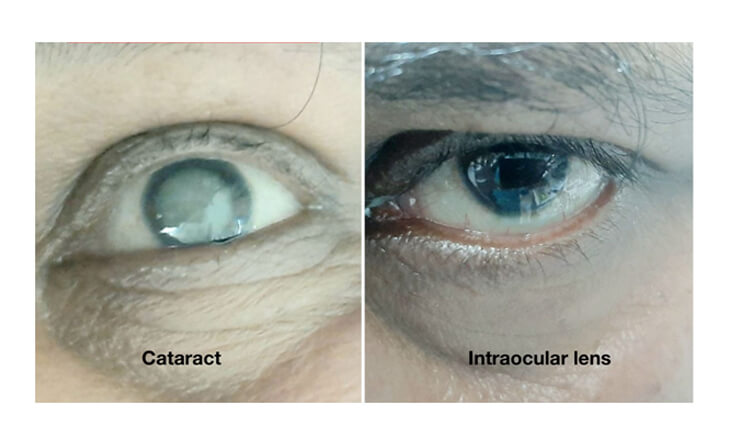Types of Intraocular Lens (IOL)
An intraocular lens (IOL) is an artificial lens used to replace the eye’s natural lens. The lens is the part of the eye that refracts light rays, helping them focus on the retina so you can see. Conditions like cataracts and presbyopia can make the lens either cloudy or rigid, compromising your vision. Thus, you need an intraocular lens surgery to regain eyesight.
As an expert ophthalmologist, Dr. Anisha Gupta uses her extensive knowledge of different lenses to bring you your best option. Different conditions require different treatments and materials. She chooses the ideal IOL for your needs, ensuring that you have a comfortable recovery with successful results.

IOL Materials Used in Intraocular Lens Surgery
There are many kinds of IOLs in the market, made out of a variety of materials. More materials are constantly being innovated, especially with foldable IOLs that can easily be inserted.
The materials offered by expert ophthalmologists today include:
Based on your needs, Dr Gupta chooses the suitable IOL material for your eyes. Alongside this, she also determines the correct type of IOL.
Types of IOLs Used in Intraocular Lens Surgery
Much like prescription glasses or contact lenses, IOLs also have different focusing powers. Depending on your eye length and cornea curvature, your ophthalmologist chooses the ideal IOL for your eyes.
The different types of IOLs include the following.
Monofocal IOLs
Monofocal IOLs provide either near or distance vision. The IOL has equal power all over, alongside a single zone of clear focus. Patients will also need glasses alongside monofocal IOLs. Your ophthalmologist may also recommend getting a near-vision monofocal in one eye and a distance vision monofocal IOL in the other.
Multifocal IOLs
Multifocal IOLs offer several zones of clear vision, with different focal powers across regions. They enable near-vision and distance-vision clarity, and make you majorly glass-free. However, you should note that multifocal IOLs are not ideal for every patient, and your doctor will discuss any concerns with you before choosing the IOL. Dr Anisha Gupta will discuss with you regarding your needs and daily routine, and advise you regarding the need for multifocal IOL, and the appropriate model of IOL.
Toric IOLs
Toric IOLs treat astigmatism and a high cylindrical number. These implants offer different powers in different areas. They may be monofocal or multifocal, and are required in specific patients with high corneal astigmatism. When performed precisely by an expert like Dr Gupta, toric IOLs are aligned precisely to improve vision. Thus, this intraocular lens surgery is highly effective in improving your vision.
Extended Depth of Focus IOLs (EDOF)
EDOF IOLs allow good distance vision with a reasonable range of near vision and intermediate vision. The patient becomes mostly glass-free, except very small letters at reading distance, for which they may require glasses. The advantage over multifocal IOLs is that side effects such as glare, haloes or contrast loss are reduced in EDOF IOLs, allowing for reasonably clear vision at all distances.
With so many options, Dr Gupta ensures that every patient gets an IOL customised for their needs. Thus, you always need to consult with an expert like her for the best results.

Do you need intraocular lens surgery?
IOL surgery is part of the treatment course to improve your vision. It is used specifically in cataract and refractive surgery to help you recover from vision loss.
Recovery After Intraocular Lens Surgery
IOL surgery is usually an outpatient procedure with a simple recovery timeline due to the sophisticated technology and latest techniques used today.
Recovery after intraocular lens surgery includes:
Dr Anisha Gupta ensures precision and safety in every IOL surgery. As a leading ophthalmologist in Delhi, she promises superior results, significantly improving the quality of life for all her patients.
